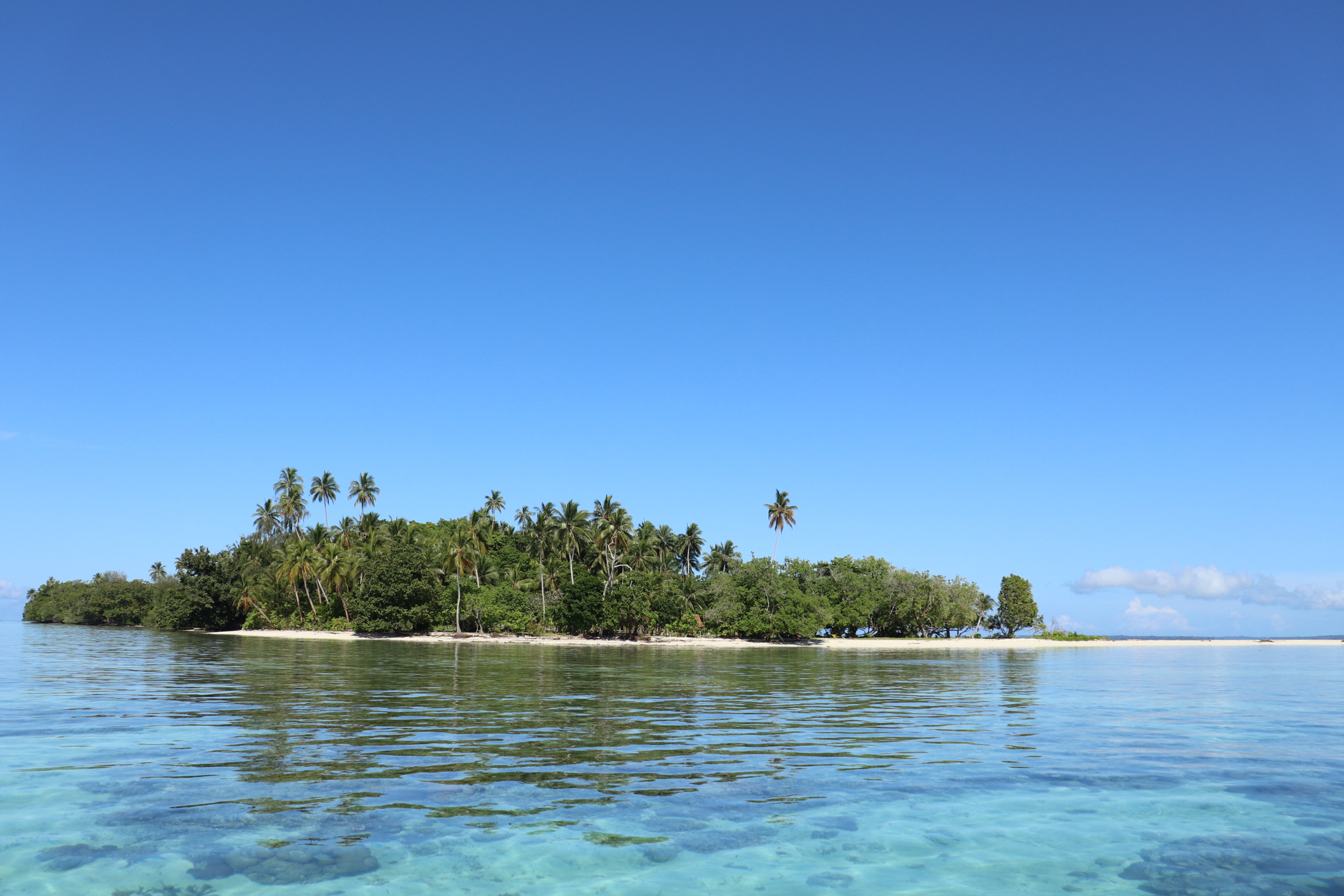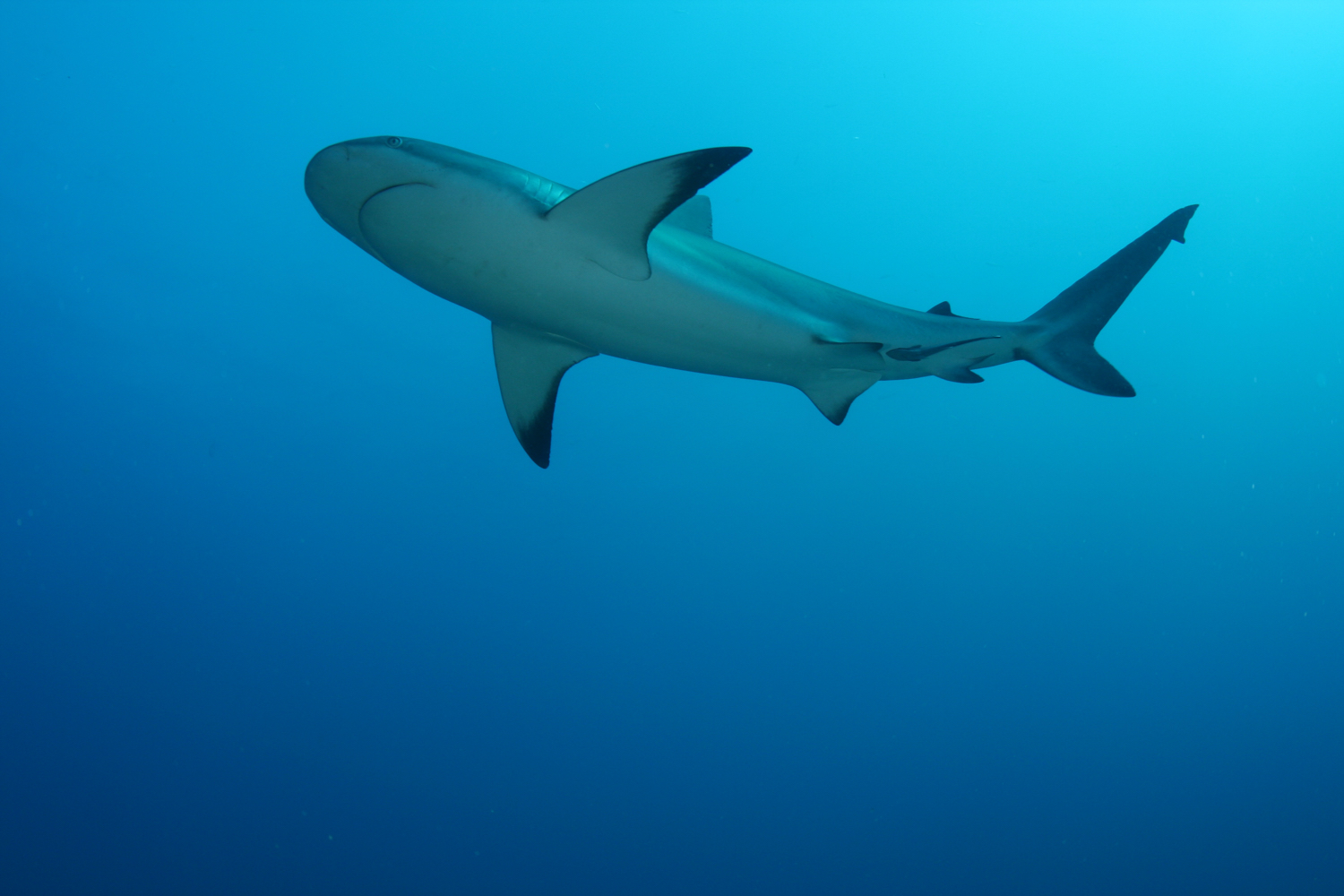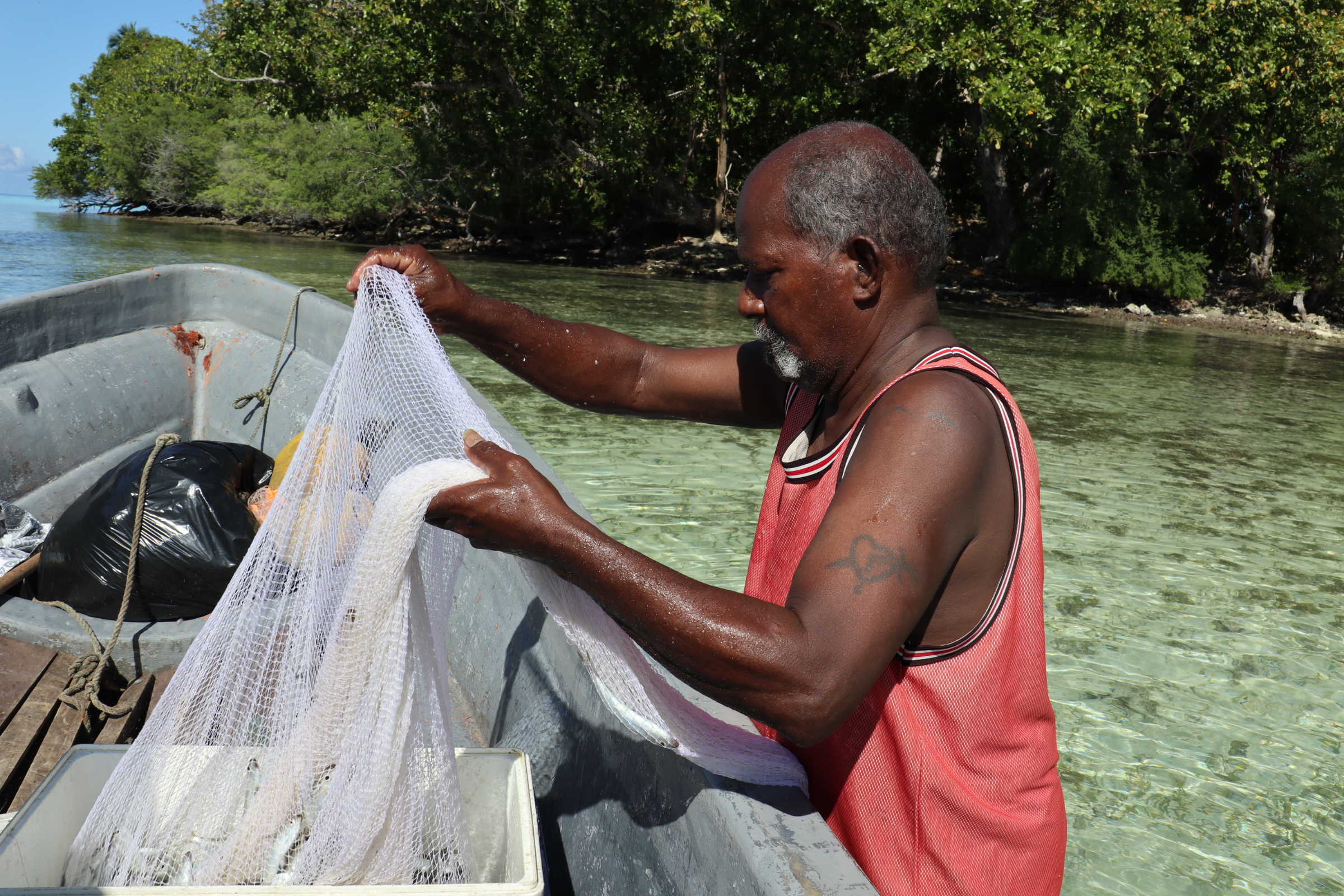Solomon Islands
Freestyle Fishing in the Solomons
Danielle Norton catches a banana boat and goes fishing with men who have a lifetime of practice and a deep understanding of the water, its intricacies and behaviour. Then comes up covered in sardine scales.
January 30, 2019
Rebecca Murphy
January 30, 2019I’m spending the day fishing with a tour guide and Julius Kera, owner of the Agnes Gateway Hotel and an elder of the Munda community. Floating peacefully on the brilliant blue, gin-clear ocean in a banana boat, we watch a frigatebird soaring through the air, chasing a seagull with a fish in its mouth. Our skipper, Silian, motors quietly towards it. There’s a school of fish there, the men surmise, interpreting nature’s signs. A lifetime of practice has given them an exceptional understanding of the water; its movements, intricacies, and behaviours.
We’re watching huge schools of trevally dart away from the sharks that have come close to the mangroves to hunt. “They’re lazy sharks,” says Ellison, my guide.

“They can’t be bothered hunting out there.” He sweeps his arm to encompass the whole lagoon and the reef beyond. I’ve never seen a shark so close to my boat before and I’m nervous but Ellison assures me that they are only dangerous to the fish.
We paddle around the tip of Kundukundu Island to where schools of hundreds of the katukatu (sardines) are frolicking, causing the water to bubble like a spa bath. Julius advances slowly towards them with the stealth of a panther stalking its prey. Holding the white nylon net in his arms, he chooses the perfect moment, then casts the net wide, pulling the cord tight immediately to draw in hundreds of sardines.

Patience is a defining quality of the Solomons, things take time, and we chat about the different nets available for fishing as Julius spends 10 minutes untangling the fish from the net and dropping them into the esky one by one. Nylon nets make it easier to get fish out, he tells me, and cotton nets are used for big fish. Julius makes his own from nylon fishing line. “It’s cheaper than buying them from the shops,” he laughs. Indeed, why buy a net when you can make one?
Sardine scales speckle the boat and our arms, glowing like snowflakes on Julius’s dark skin. We have enough bait, he says, so we make our way to a sand bank near an ocean shelf. We leave everything in the boat and jump into the shallows, heading towards a trench with snorkels and masks.
The underwater world is clear and magical. Tiny, bright blue fish dart in and out of the coral and we catch sight of a number of clownfish darting around their anemones. Crabs, angel fish, stripy fish with tigers’ colours, and a blue starfish are going about their lives without fear of us. The experience of snorkelling fills me with wonder. Every time I do it I’m struck by the sheer enormity of the marine ecosystem that lies beneath the surface of the sea.
Floating dreamily, face down watching the ribbons of light cross-crossing in spiderwebs all around, I’ve never felt so peaceful. But moments later I regret losing my concentration. The mesmerising lights have made me seasick. So ridiculous but definitely true. I remove my mask and try to settle myself by looking at the horizon, the islands, the boat, anything, but the damage is done and I have to return to the shallows and reboard the boat.
Luckily, it’s time for our picnic lunch and we paddle to nearby Hopei Island. Part of this island is owned by Julius, but it is almost void of man made structures. Save for one fale and one uninhabited house which is about to undergo renovation, the island is untouched. The inner forest is not thick but offers plenty of shade for the Roviana people who are welcome to visit for picnics.
While I’ve been swimming, Julius and Silian have caught four fish with our sardine bait. Staff from the Agnes Gateway Hotel have prepared a traditional stone fire and the coral is so hot it’s white. The red snapper and coral fish are laid across the stones and Daniel uses a pair of tongs fashioned from the hard stem of the the coconut leaf. It’s the embodiment of an ‘eco lunch’ experience.
The guide keeps reminding me that it’s a once in a lifetime opportunity, but for the people of the Solomons it is not. It’s how they do it. Kids learn as soon as they’re old enough to help how to build and stoke the fire, how to cut and cook the fish on the stones and how to weave a plate from coconut leaves.
We squeeze a slice of lime over our snapper and eat the flesh of the fish with our fingers, straight off the bones, the smoky skin crisp and delicious, the inner meat cooked through and flaking perfectly. Using my hands to eat is a little confronting at first and I have to juggle my plate and drink a little but I get the hang of it and it’s almost natural to me by the end of the meal.
After lunch, which included salad vegetables and local fruits, we dispose of everything happy knowing that nothing will go to landfill here. The plate, the bones, the salad and fruit scraps will all return to an ecosystem which welcomes them and, in fact, absorbs them naturally.
After eating, I wander to the shore to wash my hands in seawater, grabbing handfuls of sand to scrub the grease off. A natural exfoliation, my hands feel smooth and soft afterwards.
The Solomons have shown me the world as it used to be; before we sold our food to each other in plastic bags, before disposable picnic plates, hand sanitiser and baby wipes, and I like it. The pristine beauty of the natural environment and the lack of pollution, both physical and emotional, speaks to me out here in the Western province.
For a truly authentic experience of island life, you can’t beat this.
© 2024 Pacific Island Living Magazine all Rights Reserved
Website by Power Marketing